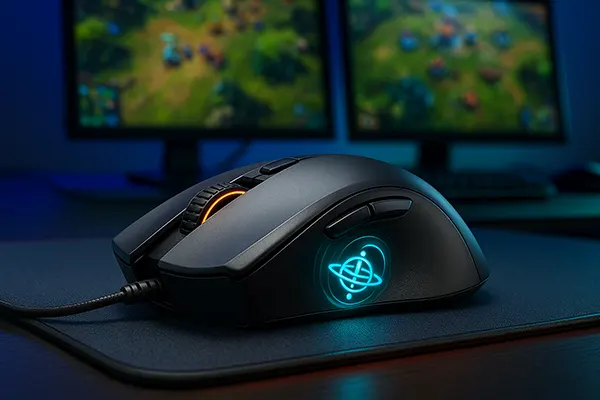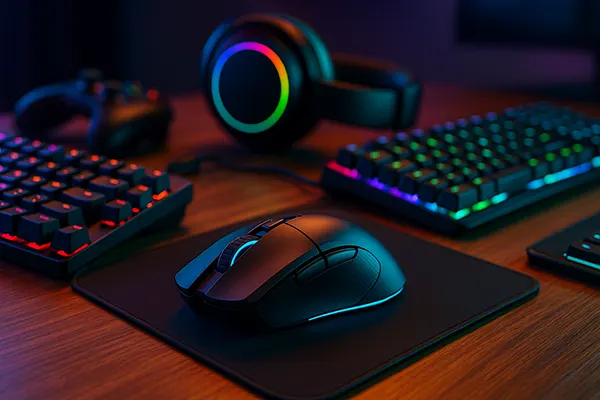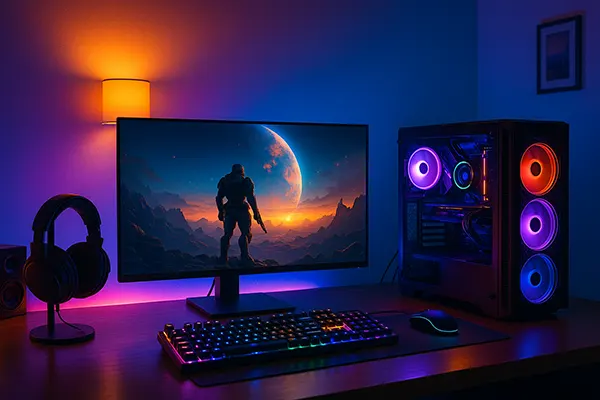
Gyroscopic Gaming Mice with Motion Sensors in 2025: A Revolution in RTS and MOBA
While gaming mice have long been dominated by traditional optical and laser sensors, 2025 is shaping up to be a pivotal year for innovation. Gyroscopic technology and motion sensors are increasingly making their way into high-end gaming gear, promising new levels of precision and interactivity. In genres such as Real-Time Strategy (RTS) and Multiplayer Online Battle Arenas (MOBA), these advancements are not just novel—they’re game-changing.
What Is a Gyroscopic Mouse?
At its core, a gyroscopic mouse includes an internal gyroscope and often an accelerometer. These components allow the device to detect rotational and linear movement in space, similar to motion controls in smartphones or VR controllers. Unlike traditional mice, which rely solely on movement across a surface, gyroscopic mice can respond to subtle tilts, flicks, and twists of the wrist.
Manufacturers like Razer, ASUS, and Mad Catz are leading the charge in this arena. For example, the Razer HyperMotion+ integrates a gyroscope for angular velocity sensing, while ASUS’ ROG Harpe Ace boasts motion detection that adapts to hand movements mid-combat. These devices merge physical motion tracking with traditional DPI adjustments, resulting in hybrid control schemes.
Technical differences also include onboard calibration systems, low-latency wireless chips, and AI-powered tracking assistance. The combination of these technologies translates into smoother in-game responsiveness and faster reaction capabilities, especially when performing complex manoeuvres or micro-controls.
Comparison with Traditional Gaming Mice
While standard mice are limited by their dependence on flat surfaces, gyroscopic mice thrive in dynamic environments. This is particularly evident when executing complex skill rotations or army micromanagement in RTS games, where precise directional control is crucial. The gyroscope adds a new layer of control, making it possible to issue commands or rotate viewpoints more fluidly.
Battery consumption tends to be slightly higher in these newer models, but manufacturers are compensating with high-capacity lithium batteries and fast-charging support. Durability is also improving, with switches rated for 100 million clicks and reinforced internal mechanisms to handle wrist motions without sensor degradation.
Gyroscopic mice tend to be pricier, but the gap is narrowing as the technology becomes more widespread. In 2025, entry-level models are already available under €100, opening the market to more casual users willing to explore new input styles.
How RTS and MOBA Games Benefit
The competitive nature of RTS and MOBA titles requires quick reflexes, macro-management, and micro-level accuracy. Traditional gaming mice already provide high DPI and programmable buttons, but motion sensing introduces a new dimension to player input. For instance, in games like StarCraft II or Dota 2, wrist tilts can now be assigned to camera pivots or action triggers, reducing the need for keyboard combinations.
Motion input also helps reduce latency between thought and action. By combining gyroscopic movement with minimal button usage, players can perform fluid commands without breaking focus or moving their fingers away from essential keys. This is particularly advantageous for quick hero repositioning or issuing orders in a split second.
Furthermore, the ergonomics of gyroscopic mice are improving. Brands are now designing devices with balance centres tailored for twitch movements, optimising the weight distribution for RTS and MOBA playstyles. Some even come with detachable modules to switch between precision and speed configurations on the fly.
Professional Players and Testing Results
Pro-level gamers and streamers have begun adopting gyroscopic mice in tournament practice. According to tests conducted by teams affiliated with ESL and Red Bull Gaming in Q2 2025, reaction times improved by an average of 8.3% using hybrid input compared to standard mouse-only play.
In an A/B comparison over 200 matches in League of Legends and StarCraft II, players using gyroscopic controls reported smoother transitions between map navigation and attack actions. This allowed for tighter timing windows during ganks and army management. Reaction heatmaps also showed reduced hand fatigue due to more natural movements.
However, some users noted a learning curve. Integrating motion control into an already complex gaming routine requires re-mapping habits and building new muscle memory. Tutorials and manufacturer-provided configuration apps have proven essential to reduce onboarding friction.

Who Should Avoid Gyroscopic Gaming Mice?
Despite their advantages, gyroscopic mice are not for everyone. Players who rely on high-arm-sweep precision or use unconventional grips (like fingertip or claw in vertical orientation) may find motion sensing either irrelevant or counterproductive. The additional sensitivity can result in overcorrection or accidental camera panning during high-stakes gameplay.
Casual gamers who primarily play slower-paced titles like turn-based strategy or simulators will gain little benefit from motion control. In such scenarios, traditional sensor fidelity and button customisation remain sufficient. For these users, gyroscopic features may become more of a novelty than a practical tool.
Moreover, not all systems and games currently support motion input out-of-the-box. While drivers are improving and Windows 11 now recognises motion data from HID-class devices, integration depends heavily on game-level support or third-party remappers. Without native in-game functionality, the gyroscope might go unused entirely.
Long-Term Considerations and Compatibility
Those concerned about compatibility should be aware that not all software ecosystems are equal. macOS, for instance, still lacks consistent support for motion-based input, limiting functionality to a few custom scripts or niche titles. Linux support remains experimental outside of SteamOS-based systems.
Additionally, replacement parts for gyroscopic mice (especially the motion sensor modules) are not yet widely available. If damaged, users often need to return the device to the manufacturer, increasing downtime. For high-demand players or those participating in competitive environments, this may be a significant drawback.
Lastly, the future of this tech hinges on broader developer adoption. As of June 2025, only 12% of top RTS/MOBA titles offer explicit motion-control support. Until this number rises, the full potential of gyroscopic mice may remain reserved for early adopters and enthusiasts.




